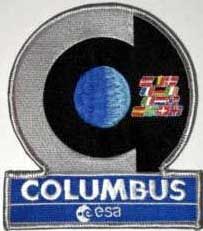|
|
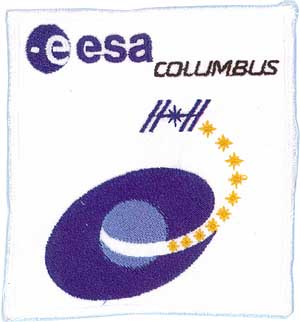
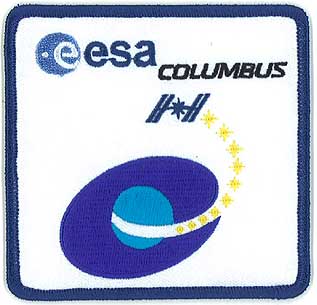
| Columbus Mission |
| Artwork |
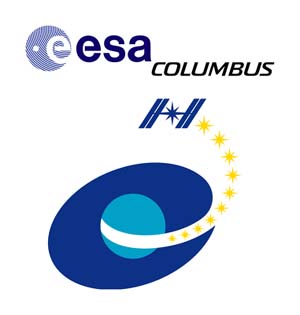
The Columbus laboratory takes its name from the famous Genoan navigator Christopher Columbus who made the notable voyages to the Americas from 1492 to 1504.
The lower half of the Columbus logo consists of a lighter blue circle symbolizing the Earth. This is surrounded by a darker blue ellipse which signifies the initial orbit of the Shuttle transporting Columbus after launch. Above these the International Space Station is shown at its higher orbiting altitude. The white stripe across the Earth symbolises two things. Firstly, it symbolises the path from east to west, which Christopher Columbus took on his way to the Americas. Secondly, it symbolizes the path of the Columbus laboratory from west to east from the launch pad in Florida into orbit and to the International Space Station, following an orbital path symbolised by the stars. The stars (10 gold and one blue) symbolise the 11 ESA Member States that contribute to ESA's human spaceflight programme. With the last star being the central part of the ISS, the stars also symbolise how the Columbus laboratory, following its orbital journey, will become an integral part of the International Space Station. The final star also symbolises the spark of genius inherent in the groundbreaking science that will take place in the laboratory once it is commissioned.
| Other logo's |
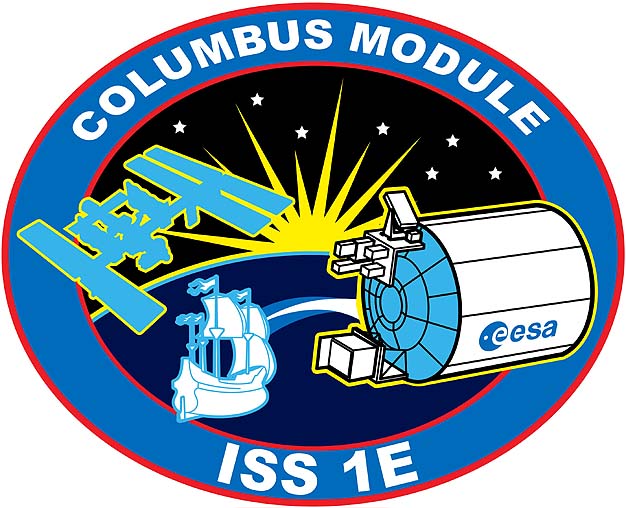
(jsc2007e053471) Official NASA logo for the ISS-1E Columbus mission.
These (see below) first designs of the ISS-1E logo were rejected by ESA:
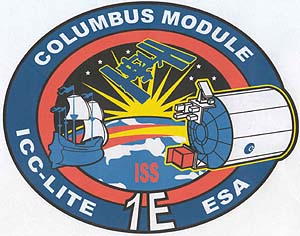
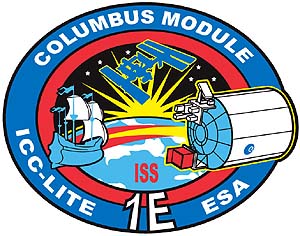
Some managers did feel that ESA was "underepresented" in the design. At least one ESA-manager from Italy did not accept it, because the "jet" or "beam" connecting the SANTA MARIA and the COLUMBUS-Module were the colors of the Spanish flag and not ESA or maybe the "Italian colors".
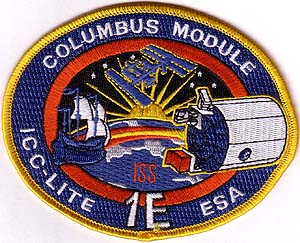
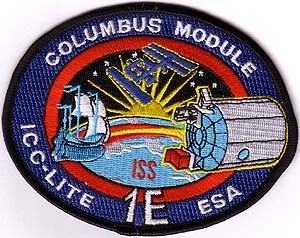
2 different patches of the first rejected ISS-1E logo.
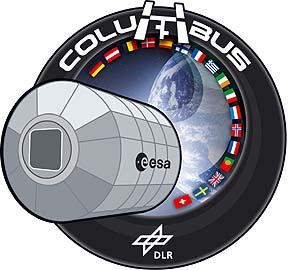
The Germany's Space Agency, DLR, alo made a logo for the Columbus module.
| Collecting Columbus |
